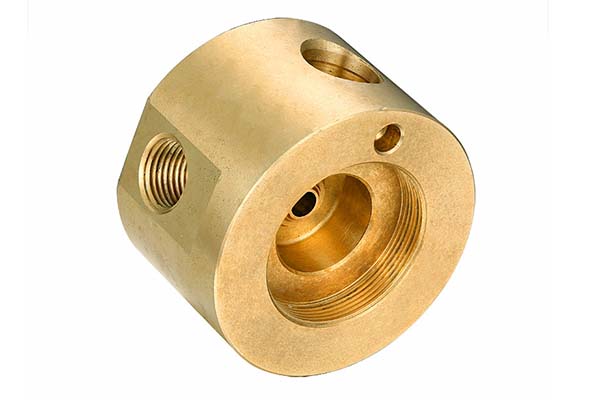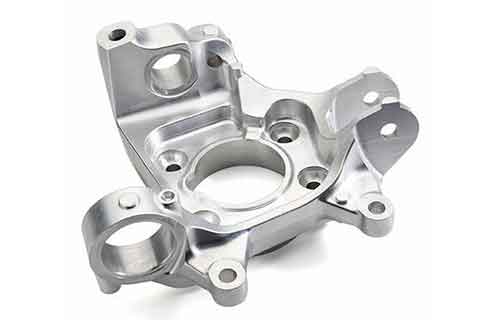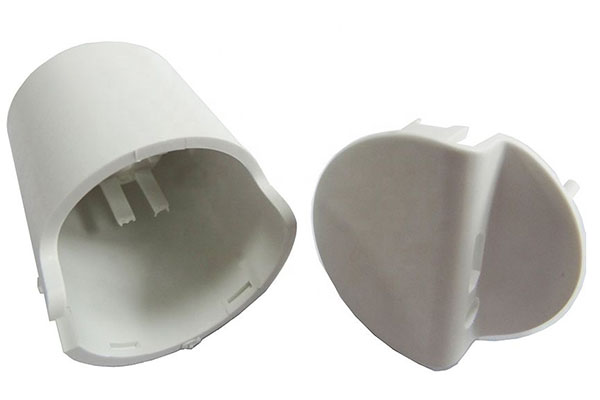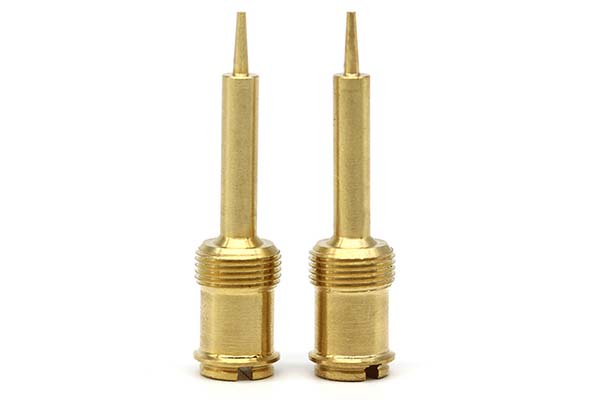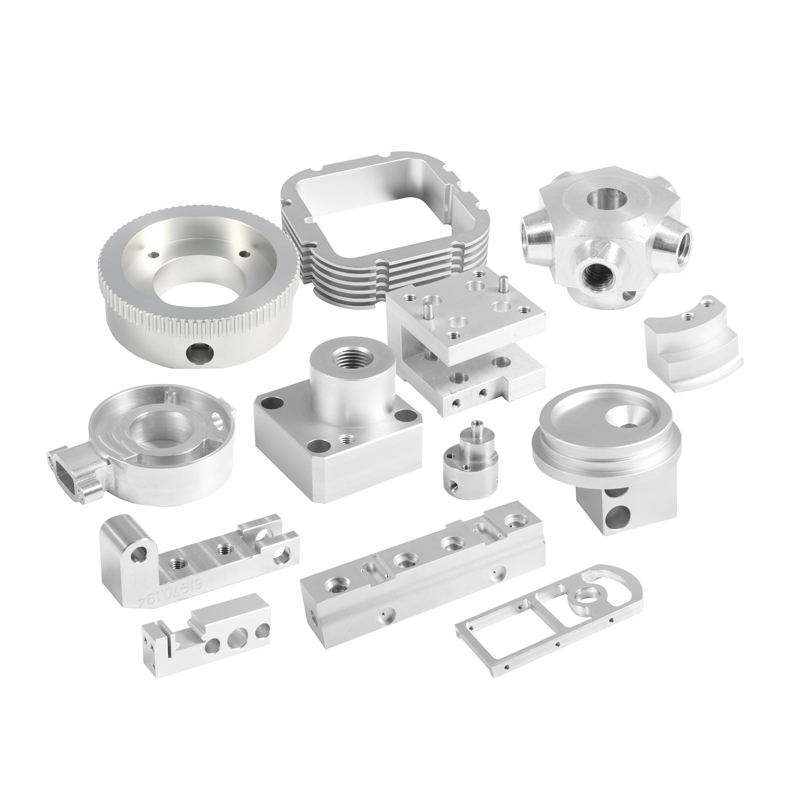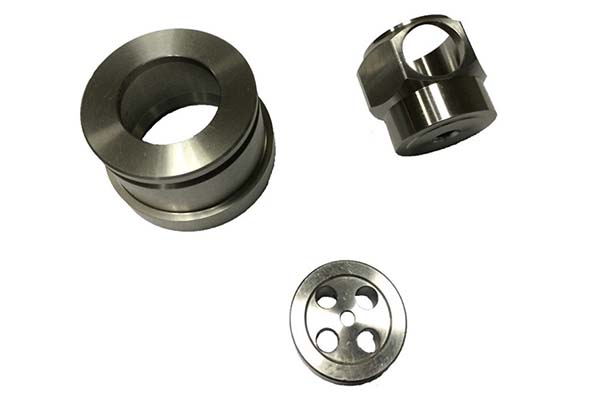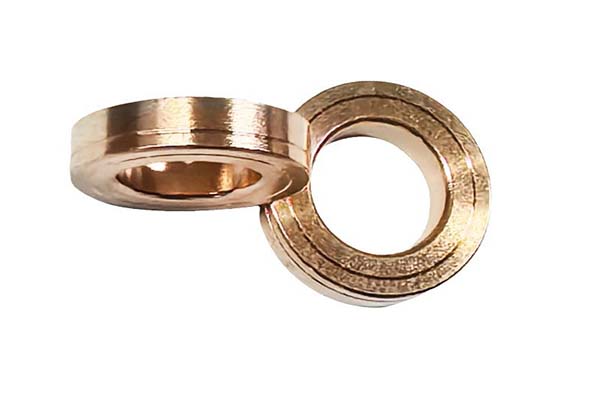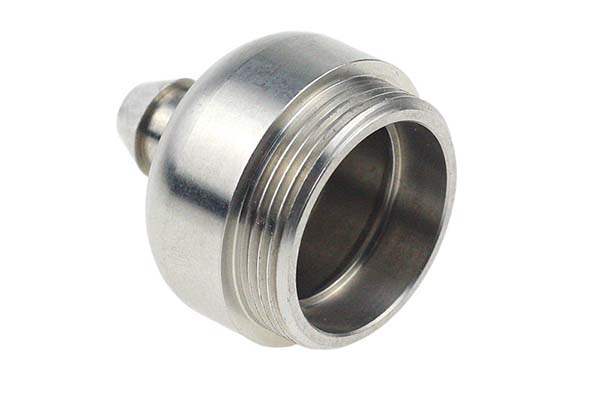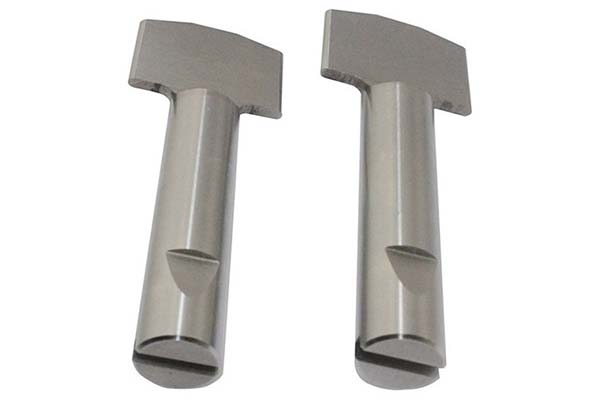C14500 tellurium copper is a go-to material in many precision industries, but machining it effectively comes with its own set of challenges. While it's known for being easier to machine than some other copper alloys, getting the best results still requires understanding its unique properties and using the right techniques. This guide will help you navigate those challenges and achieve top-quality parts.
Material Overview of C14500 (Tellurium Copper)
C14500 is a tellurium copper alloy that contains 0.4–0.7 % Te, which is what gives it its exceptional machining properties. Unlike pure copper, which can be gummy and hard to machine, this alloy is a free-machining copper with a machinability index 90%. That high index means it cuts cleanly, produces manageable chips, and reduces tool wear compared to many other copper materials.
Even with the added tellurium, C14500 maintains good electrical and thermal properties. Its electrical conductivity is around 90 % IACS, making it suitable for electrical applications where both conductivity and machinability are important. The thermal conductivity is also impressive, allowing it to transfer heat efficiently, which is useful in components like welding torch tips.
Another key advantage of C14500 is its stress-corrosion cracking resistance. This makes it durable in environments where parts might be exposed to stress and moisture, extending the lifespan of the components. It's also non-sparking, a critical safety feature in industries where flammable materials are present, such as in oil and gas or chemical processing.
Plus, C14500 is a lead-free copper alloy, which is increasingly important as regulations around lead content in materials become stricter. This makes it a safe choice for applications where lead exposure could be a concern, like in some medical or food processing equipment components.
| Property | C14500 Value |
| Tellurium Content | 0.4–0.7 % Te |
| Machinability Index | 90% |
| Electrical Conductivity | 90 % IACS |
| Key Feature | Non-sparking, lead-free |
CNC Machining Strategies for C14500
High-Speed CNC Turning
High-speed CNC turning works exceptionally well with C14500. Thanks to its free-machining nature, you can achieve high cutting speeds without excessive tool wear. This not only increases productivity but also helps in getting a smooth surface finish. When turning, keeping the speed consistent and matching it to the tooling used will yield the best results.
Precision Milling
For precision milling of C14500, the focus should be on maintaining tight tolerances. The alloy's stability during machining makes it easier to achieve accurate dimensions, but using proper fixturing to prevent movement is still important. Whether you're creating simple or complex shapes, the material's machinability helps in getting clean, precise cuts.
Micro-Drilling
Micro-drilling in C14500 is more manageable than in many other coppers. The tellurium in the alloy helps the drill bit cut through cleanly, reducing the risk of breaking small drills. This is useful for creating tiny holes in components like pin contacts, where precision is paramount.
Trochoidal Milling
Trochoidal milling is a great strategy for C14500, especially when working on larger areas. This technique involves the tool moving in a circular path while advancing, which reduces the amount of time the tool is in contact with the material. It helps in controlling heat buildup and extending tool life, which is beneficial even with a free-machining alloy.
Climb vs Conventional Milling
When deciding between climb vs conventional milling for C14500, climb milling often works better. Climb milling pulls the tool into the material, resulting in a smoother cut and reducing the chance of chip buildup. Conventional milling can still be used, but it may produce more friction and heat, which can affect the surface finish.
Adaptive Toolpaths
Using adaptive toolpaths is a smart move when machining C14500. These toolpaths adjust based on the material and the cut, optimizing the feed rate and speed to maintain consistent cutting conditions. This not only improves efficiency but also helps in achieving a more uniform surface finish across the part.
Chip Thinning
Chip thinning is a technique that's particularly useful in high-speed machining of C14500. By adjusting the feed rate and cutting speed, you can ensure that the chips are thin and easy to evacuate. This prevents chip clogging, which can damage the tool or the part, and keeps the cutting area clean.
Coolant Strategies: Coolant-Through-Spindle and MQL
Proper coolant application is still important with C14500. Coolant-through-spindle systems are effective because they deliver coolant directly to the cutting edge, reducing heat and flushing away chips. For situations where less coolant is desired, MQL (minimum quantity lubrication) works well. MQL uses a small amount of lubricant, which is enough to reduce friction without the mess of flood cooling, making it a good choice for precision parts where excess coolant could cause issues.
Tooling & Cutting Parameters
Coated Carbide Inserts and PCD Tooling
For machining C14500, coated carbide inserts are a great choice. The coating helps reduce friction and wear, extending tool life. For even higher precision and better surface finishes, PCD tooling is an excellent option. PCD tools are hard and wear-resistant, making them ideal for achieving tight tolerances and smooth surfaces.
Polished Flutes
Tools with polished flutes are recommended for C14500. The polished surface helps in chip evacuation, preventing chips from sticking to the tool and causing poor cuts. This is especially important in drilling and milling operations where chip buildup can be a problem.
Rake Angle
A 10–15° rake angle is optimal for tools used on C14500. This angle allows the tool to cut through the material cleanly, reducing cutting forces and heat. It also helps in forming proper chips, which are easier to manage.
Surface Speed, Feed, and Depth of Cut
- Surface speed: 200–350 m/min is the sweet spot for C14500. This range balances cutting efficiency with tool life, ensuring fast material removal without excessive wear.
- Feed: A feed rate of 0.05–0.15 mm/tooth works well. This feed rate is slow enough to maintain precision but fast enough to keep production moving.
- Depth of cut: 0.5–2 mm is suitable for most operations. Deeper cuts can be made, but they require more power and may generate more heat, so adjusting the speed and feed accordingly is necessary.
Edge Radius Control and Tool Life Optimization
Controlling the edge radius of the tool is important for achieving good surface finishes in C14500. A properly controlled edge radius reduces the chance of burrs and ensures a smooth cut. To optimize tool life, regular inspection of the tool is key. Even with a free-machining alloy, tools wear over time, and replacing them before they become too dull will prevent poor cuts and damage to the part.
Surface Quality & Dimensional Accuracy
Ra 0.2–0.4 µm Finish
Achieving a Ra 0.2–0.4 µm finish in C14500 is achievable with the right tools and parameters. Using PCD tools and maintaining consistent cutting speeds and feed rates will help you reach this level of surface finish, which is suitable for many electrical and mechanical components.
Mirror Finish Pass
For applications that require a mirror finish pass, a final light cut with a sharp PCD tool is the way to go. Using a slow feed rate and high speed during this pass will produce a reflective surface, which is important for parts like RF coaxial components where signal integrity depends on surface smoothness.
Tight Tolerances
C14500 can hold tight tolerances ±0.01 mm when machined properly. Its stability during cutting and good machinability make it easier to achieve these tight tolerances compared to less machinable copper alloys. This is crucial for parts like aerospace terminals, where even small deviations can affect performance.
Burr-Free Machining and Micro-Deburring
While C14500 is less prone to burrs than pure copper, burr-free machining still requires attention to tool geometry and cutting parameters. Using sharp tools with the right rake angle and proper feed rates helps minimize burr formation. Any remaining burrs can be removed with micro-deburring techniques, ensuring the part is safe to handle and functions correctly.
Surface Integrity, Part Flatness, and Cylindricity
Maintaining surface integrity is important for the performance of C14500 parts. Avoiding excessive heat during machining prevents surface damage, which can affect conductivity or corrosion resistance. Part flatness and cylindricity are also easier to achieve with C14500 due to its stable machining properties. Using proper fixturing and ensuring the machine is calibrated will help in meeting these geometric requirements.
CMM Inspection
Regular CMM inspection is a good practice when machining C14500, especially for critical parts. Coordinate measuring machines can check dimensions and tolerances with high accuracy, ensuring the parts meet the design specifications. This is particularly important in industries like aerospace, where quality and reliability are paramount.
Applications & Target Industries
Electrical Connectors and Pin Contacts
C14500 is widely used in electrical connectors and pin contacts because of its good electrical conductivity and machinability. It can be easily shaped into the precise forms needed for these components, ensuring a secure and reliable electrical connection.
Relay Sockets
Relay sockets require parts that are both conductive and easy to machine, making C14500 a great choice. Its stability and resistance to wear ensure the sockets function properly over time.
Welding Torch Tips and Plasma Electrodes
The high thermal conductivity and machinability of C14500 make it ideal for welding torch tips and plasma electrodes. These components need to withstand high temperatures and maintain their shape, which this alloy can do effectively.
Bus Bars for EVs
With the growing electric vehicle industry, bus bars for EVs made from C14500 are in high demand. They need to conduct electricity efficiently and be shaped into complex forms, both of which this alloy excels at.
RF Coaxial Parts and Aerospace Terminals
RF coaxial parts require precise dimensions and smooth surfaces to ensure good signal transmission, which C14500 can provide. Aerospace terminals also benefit from its tight tolerance capabilities and reliability in harsh environments.
Power Distribution Components
In power distribution systems, power distribution components made from C14500 offer a combination of conductivity, machinability, and durability, making them a practical choice for these critical applications.
Yigu Technology has extensive experience in machining C14500 tellurium copper. We understand how to leverage its free-machining properties to produce high-quality parts efficiently. Whether you need electrical connectors, aerospace components, or any other C14500 parts, our expertise in tool selection, cutting parameters, and quality control ensures your parts meet the highest standards.
FAQs
- Is C14500 suitable for high-temperature applications?
- C14500 can handle moderate high temperatures, but it's not ideal for extremely high-temperature environments. Its thermal conductivity helps dissipate heat, but prolonged exposure to very high temps can affect its properties.
- How does C14500 compare to C11000 in terms of machinability?
- C14500 is much easier to machine than C11000. With a machinability index of 90% compared to C11000's around 20%, C14500 produces cleaner cuts, less tool wear, and is more efficient to process.
- Can C14500 be used in marine environments?
- Yes, C14500 has good corrosion resistance, including in marine environments, making it suitable for components used in boats or coastal applications. Its stress-corrosion cracking resistance adds to its durability in such settings.
